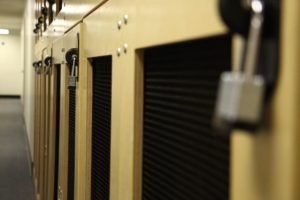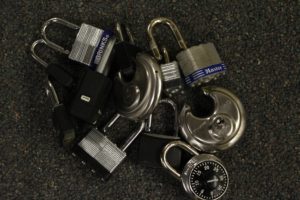Written by Seth Huling. Media by Taylor Neal.

When you move to college you will undoubtedly have certain items that you bring with you that you feel the need to lock up to prevent theft. Here at Greenville College, padlocks are a common sight. They are used on bikes, lockers, and there are even people that use padlocks to lock up their precious items in their dorm rooms. But seeing all these locks begs the question: how safe are the padlocks we trust so much?
Lock picking is something that we’ve all seen in movies. The scene usually involves a shady character who will say something like, “Nothing is ever locked,” before deftly opening a lock in a matter of seconds. The unfortunate truth is that this is not an extreme exaggeration. Padlocks are largely for show, and anyone with a $20 pick set and a little bit of practice can pop the lock open in just a matter of seconds and be off with whatever item its owner thought was safe.
The reason why padlocks– especially cheap ones– are so easy to pick is that they are just the “skin and bones” of locks. They rarely have any security pins, differential spring compositions, or false sets. Imagine for a moment that padlocks are bodyguards. You’re not going to hire a bodyguard that is 5’1, 120 lbs, and has no martial arts training! No, you want the 6’8, 350 lbs, ex-football player who knows Brazilian Jiu-Jitsu to be guarding you. Padlocks are very similar. Why would you use a $10 padlock to keep your 100’s of dollars of music equipment safe?
What about combination locks, though? The most common combination lock is a Master Dial Combination lock. These locks seem safer because, without a keyhole, the lock can’t be picked. Unfortunately, though, they can still be beaten. Due to the locks being mass produced they follow a consistent algorithm that allows you to deduce the combination. All you need is to find the third digit of the combination and that narrows the number of possible combinations from 16,000 to 100. This may seem like it’s still a lot, but rather than taking over a week to try all possibilities, you’re looking at about 5 minutes. The way to find this third digit is actually rather simple. All one needs to do is apply pressure to the U-link of the lock whilst turning the dial. The dial will catch at 12 different points. 7 of these numbers will be half numbers (i.e. 12.5, 17,5, etc.); these numbers are not what you want. 4 of the remaining 5 numbers will have a common digit (i.e. 2, 12, 24, 32); you don’t want any of these either. The odd number out, however, is the third digit in your 3-digit combination. From this point, it’s just knowing the algorithm with roughly 5 minutes worth of trial and error.

This may seem like one big scam, but what were you expecting from a $10 lock? The best way to keep your smaller items safe is to buy, well, a safe. For those things where you really just need a padlock, don’t just go with the cheapest option. If you have a $200 bike or hundreds of dollars worth of music equipment to lock up, buy a high-security lock that will actually keep people out of your stuff. There are excellent 4 digit combination padlocks that you can get for around $100 that will keep your stuff safe from anyone with less than a blow torch or high-end bolt cutters. Padlocks should be thought of as an investment in your security. Cheap locks offer crappy security.




























